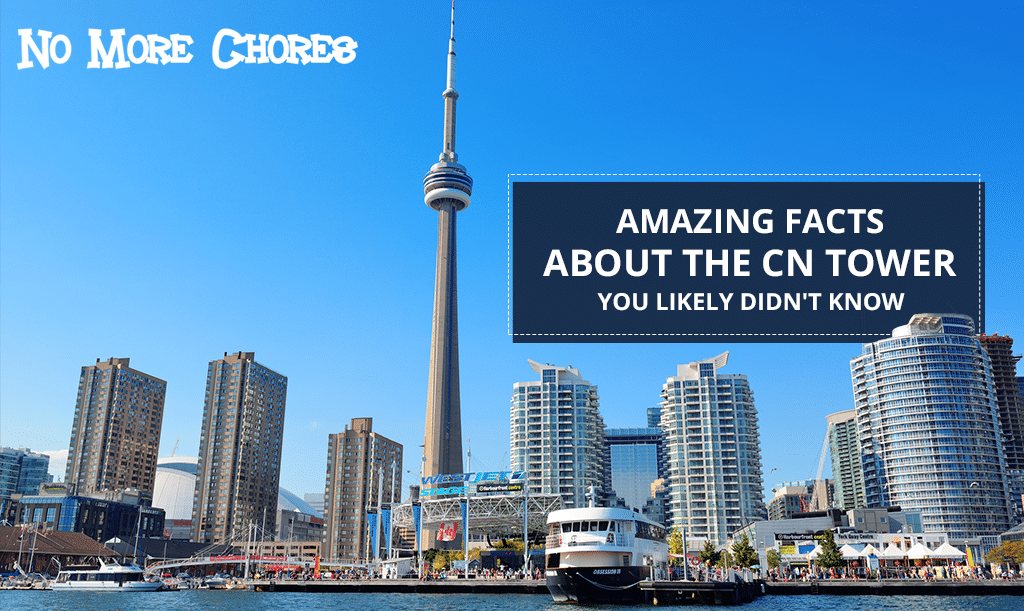Toronto, nestled by Lake Ontario, is home to the CN Tower in Toronto, a marvel that holds several facts about the CN Tower that distinguish it. Recognized as the tallest free-standing structure in the Western Hemisphere, it towers over the Metro Toronto Convention Centre and the city’s skyline. The CN Tower, apart from being a modern world marvel, signifies Toronto’s forward-thinking spirit.
Its stature, often compared to global wonders like the Burj Khalifa and the Canton Tower, makes it a sight to behold. More than its aesthetic appeal, it functions as a vital telecommunications hub in this digital era, linking vast regions together. Visitors to its observation deck are often drawn to the CN Tower’s glass floor, offering a bird’s-eye view that’s both thrilling and memorable. Constructing this engineering marvel wasn’t without its challenges, each telling a tale of human determination and expertise.
For the adventurous, the EdgeWalk, guarded by an overhead safety rail, is a must-try. With every step on the tower’s main pod, they get to experience a hands-free walk, defying the very laws of gravity. Its significance isn’t lost on the media; the CN Tower often graces the pages of the Toronto Star and other publications. This isn’t merely a tower or one of the seven wonders of the modern age; it’s a beacon of innovation, a symbol of Canada’s relentless pursuit of excellence.
History and Construction
Origins of the CN Tower: Why and when was it built?
The CN Tower, a prominent structure in the western hemisphere, defines Toronto’s skyline. The tower in Toronto, Canada, was built to show the city’s fast tech growth and is its tallest building. During the 1960s, as Toronto expanded, there was an urgent need for a robust telecommunications nexus.
The Canadian National Railway recognized the city’s expanding needs and conceived the idea of the tallest free-standing structure. This tower would both enhance communications and showcase Canadian innovation. Thus, the idea of the CN Tower, which would soon become the world’s tallest tower, was born.
Construction for the CN Tower commenced in February 1973. This big project had challenges, but the hardworking team from Canada and other countries kept pushing through. By April 1975, in just over two years, the tower’s impressive form was complete, reaching skyward to a staggering 553.33 meters (1,815 feet, 5 inches).
On June 26, 1976, doors to the CN Tower were opened to the public, timely celebrating Canada’s centennial. This famous tower, like the new buildings near Niagara Falls, quickly became a symbol of national pride and engineering skill.
This colossal project was the fruit of myriad minds and hands, from visionary architects to diligent builders. Their collective effort ensures that the CN Tower remains perfectly straight, a testimony to what collaborative spirit can manifest.
Today, the CN Tower, equipped with an observation deck and a revolving restaurant, continues to draw admiration. Many visitors go to the tower’s top to eat at its restaurant, which has a great wine selection. Some also try the popular EdgeWalk. Beyond being a marvel of architecture, the tower is integral for today’s communication, making it a revered landmark. The CN Tower supports good causes. It works with groups like the United Way, the World Wildlife Fund, and the World Federation to help global efforts.
Technical challenges faced during construction
The CN Tower’s construction, one of the great towers of our time, embodied the prowess of civil engineers. These experts encountered unique challenges. The Toronto skyline, particularly around Front Street, is known for its gusty conditions. Given the tower’s claim as one of the tallest structures, its slender design made it susceptible to these winds.
Their ingenious solution? An aerodynamic hollow tube design, combined with an open lattice structure, allows the wind to flow through. This groundbreaking design wasn’t the only marvel; within the CN Tower’s main pod, a series of dampers were strategically placed, ensuring minimal sway during turbulent conditions.
However, the story doesn’t end there. Given its stature, an actual moose could see the tower from miles away, but so could lightning clouds. Recognized in the Guinness World Records as a tower reaching for the heavens, the CN Tower naturally attracted lightning.
Addressing this was paramount. Using copper strips, a sophisticated lightning rod system was integrated. The tower’s framework, acting as a conductor, ensured lightning’s fierce energy was safely directed to the ground.
But it’s not all just about challenges and engineering feats. The CN Tower also boasts of the world’s highest delights. A visit would be incomplete without a trip to the top of the tower. The lookout level offers breathtaking views, and for the brave-hearted, the harness system lets visitors walk on the edge.
Feeling peckish afterward? The tower’s restaurant dubbed the cellar in the sky, not only serves delicious cuisine but also holds the title of the highest wine cellar. Yes, wine enthusiasts can savor a glass in the world’s loftiest wine cellar, perhaps celebrating Mother’s Day or Earth Day. Additionally, tourists frequently leave with Canadian coins as souvenirs, encapsulating memories of their visit.
In essence, the facts about the CN Tower, from its foundation to the very tip, exemplify not just architectural mastery but also Toronto’s undying spirit of innovation.
10 Amazing Facts about the CN Tower in Toronto
1. Height and Ranking
The CN Tower stands tall as one of the world’s tallest structures, reaching an impressive height of 553.33 meters (1,815 feet, 5 inches). It held the record for the tallest freestanding structure in the world for over three decades until it was surpassed by the Burj Khalifa in Dubai.
2. The Glass Floor
One of the most thrilling experiences the CN Tower offers is its glass floor. Constructed with five layers of reinforced glass, the glass floor allows visitors to look straight down to the ground, giving them a spine-tingling sensation of walking on air. It can withstand the weight of 35 moose and offers a unique perspective of the bustling city below.
3. Lightning Strikes
Due to its height and prominent location, the CN Tower is frequently struck by lightning. On average, it is struck about 75 times per year. To ensure the safety of visitors and the tower itself, a lightning rod system was implemented during construction, which effectively channels lightning strikes safely to the ground.
4. Architectural Design
The CN Tower’s architectural design is a true marvel. Its sleek and modern aesthetics, combined with its slender profile, make it an iconic symbol of Toronto. The tower has a unique pod near the top. It holds observation decks and a spinning restaurant. Visitors enjoy stunning city views from it.
5. Role in Telecommunications
The CN Tower serves a vital role in Toronto’s telecommunications infrastructure. With its towering height and strategic location, it acts as a crucial hub for transmitting signals across the city and beyond. Its antennas facilitate seamless communication, ensuring people stay connected in the digital age.
6. EdgeWalk Experience
For adrenaline junkies seeking an unforgettable experience, the CN Tower offers the EdgeWalk. This thrilling adventure allows daredevils to walk along a ledge outside the tower, 356 meters above the ground. Participants are attached to a harness and can lean out over the city, experiencing a rush like no other.
7. Records Held
The CN Tower holds several world records and national records. Notably, it held the title of the world’s tallest freestanding tower until it was surpassed by the Tokyo Skytree in 2011. It is also recognized as the tallest freestanding tower, with a restaurant boasting the spectacular 360 Restaurant, which offers panoramic views while diners enjoy a delicious meal.
8. Renovations and Upgrades
The CN Tower has changed over time to make visits better. Recent changes include new, full-size windows on the observation decks for clear city views. The tower also added the EdgeWalk for visitors seeking thrilling adventures.
9. Sustainability Initiatives
The CN Tower uses energy-efficient lights and sustainable cleaning for the environment. These changes lower its environmental impact. The tower also actively promotes recycling and waste reduction among visitors and staff.
10. Cultural Impact
The CN Tower holds significant cultural importance in Canadian culture, film, and media. It has been featured in numerous movies, television shows, and music videos, solidifying its status as an iconic symbol of Toronto. Against a bright sunset, its shape stands as the city’s symbol, captured in many photos and memories.
These ten amazing facts only scratch the surface of the CN Tower’s grandeur and significance. CN Tower stands tall, offering thrilling experiences and leaving a mark on everyone who sees it.
Conclusion
In conclusion, the CN Tower’s significance and recognition cannot be overstated. In Toronto, it’s a symbol of tech progress and top engineering. It shows the city’s deep history and makes its people proud. The tower’s awe-inspiring stature and cultural impact draw people from all over the world to experience its grandeur. Toronto’s CN Tower plays a key role in telecommunications. It supports smooth digital communication. The CN Tower stands as a symbol of human success and the city’s innovative spirit.
Tags: CN Tower facts and history, things you should know before climbing the CN Tower

